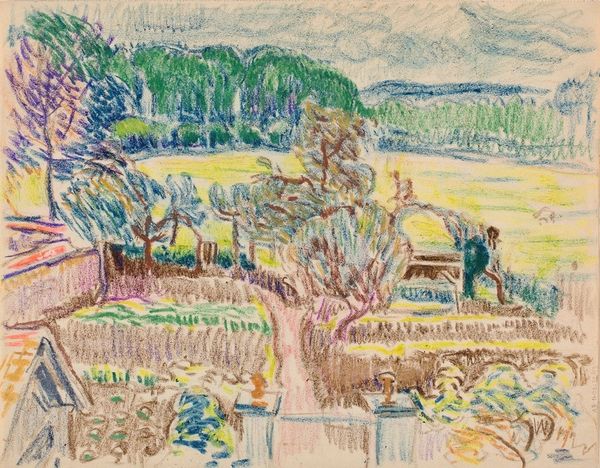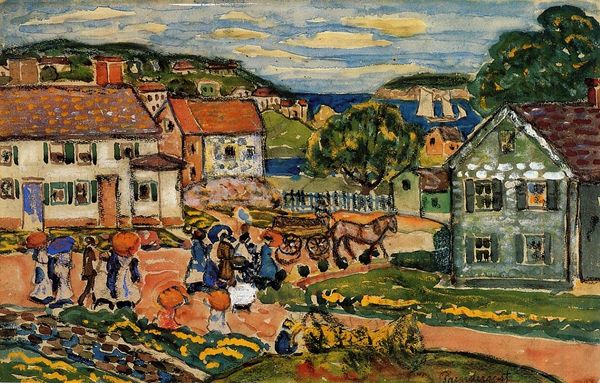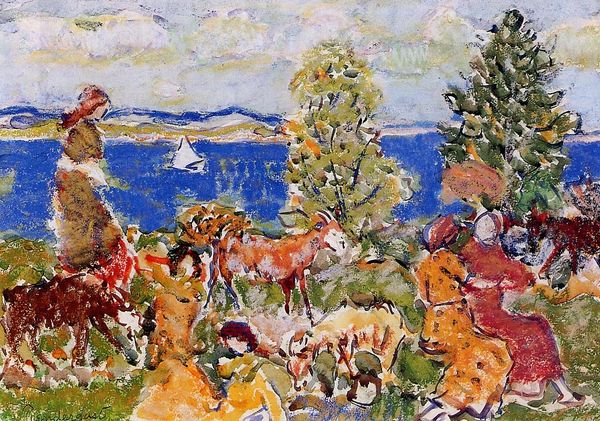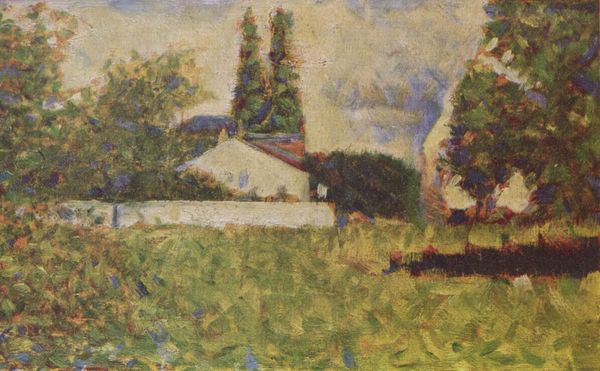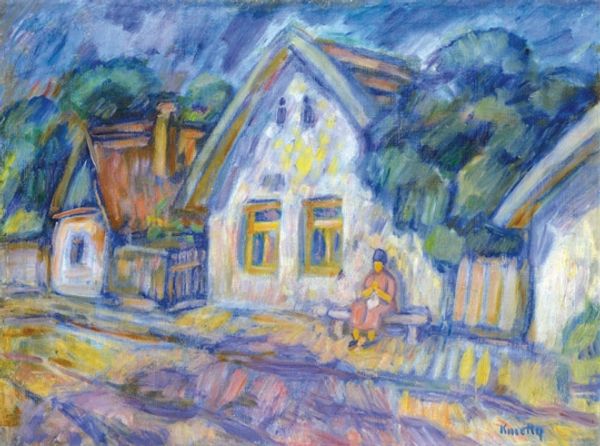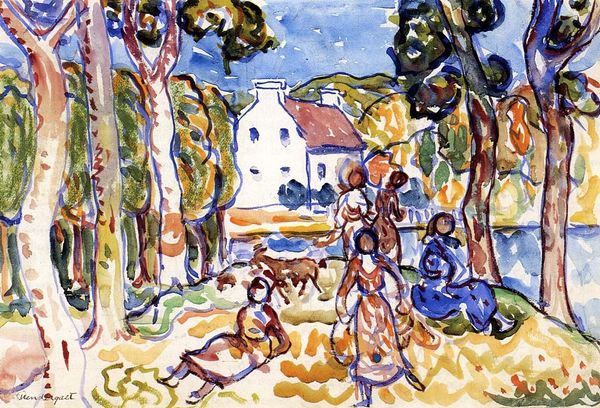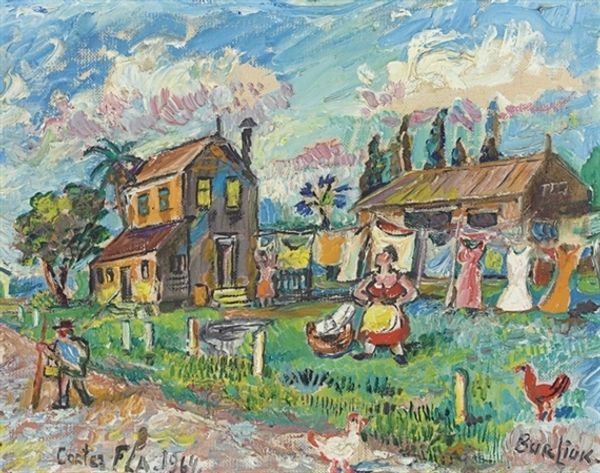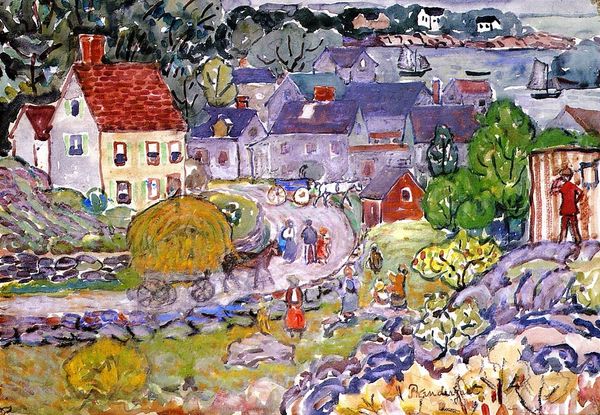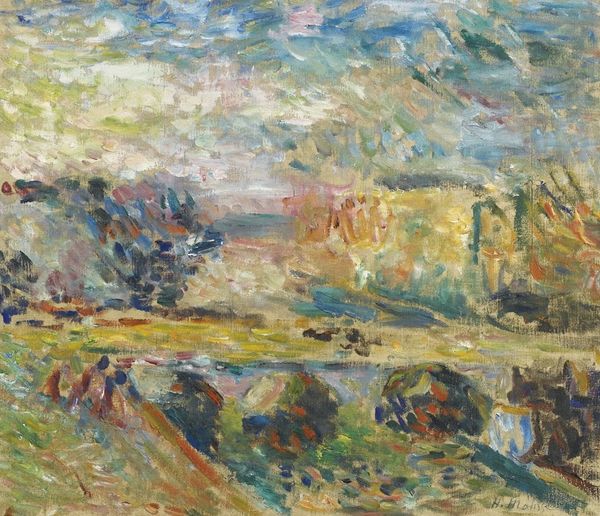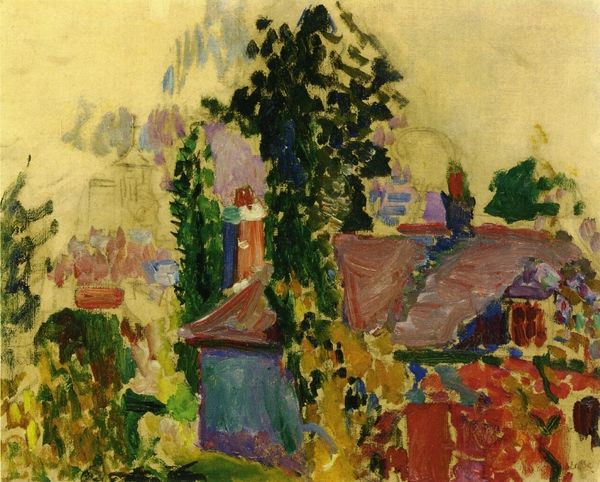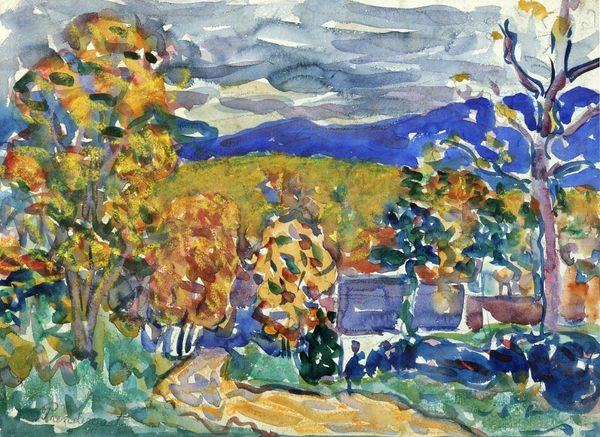
Figures and Donkeys (also known as Fantasy with Horse) 1915
0:00
0:00
mauriceprendergast
Private Collection
Dimensions: 36.83 x 44.45 cm
Copyright: Public domain
Curator: Maurice Prendergast’s watercolor, “Figures and Donkeys,” sometimes known as “Fantasy with Horse,” painted circa 1915, is now held in a private collection. What are your initial thoughts? Editor: It strikes me as quite raw and immediate. The visible strokes and the absorbent nature of watercolor on paper suggest a focus on capturing a fleeting moment in open air—what could have been the material realities for plein-air painters like Prendergast in this time? Curator: Yes, I agree. It is indeed impressionistic, focusing more on capturing the essence of light and color rather than meticulous detail. Notice how Prendergast uses short, broken brushstrokes to create a shimmering effect, a hallmark of Impressionism. The composition guides our eye, drawing us from the foreground figures toward the houses in the background, culminating in the suggestion of a distant mountain range. Editor: I’m particularly drawn to the medium. Watercolor, traditionally seen as preparatory, is elevated here. Consider the materials accessible at the time; the pigments themselves would have been painstakingly sourced and prepared. It makes you think about labor and value. The somewhat flattened perspective and vibrant colors lend a certain naiveté, disrupting conventional academic painting and signaling shifts in both material practices and aesthetic preferences. Curator: I find it particularly interesting how Prendergast handles the figuration. The figures are stylized, almost abstracted, and yet they are immediately recognizable. This is an exercise in form and color harmony, a symphony of visual elements where no single component dominates. Editor: The recurring motifs, such as figures and animals, seem almost playfully arranged. It seems the work challenges traditional hierarchy—why horses and not carriages, or commoners instead of landed gentry? The inclusion of seemingly mundane subjects offers insights into a changing societal lens, or at least signals some level of disruption in expected material representations of life and leisure. Curator: In short, it captures an intimate observation filtered through the artist's unique visual language. It's not merely a representation of a scene but rather an expression of the sensations evoked by it. Editor: Yes, a view that seems deeply engaged with the stuff of the world, the immediate processes and conditions under which Prendergast labored.
Comments
No comments
Be the first to comment and join the conversation on the ultimate creative platform.
